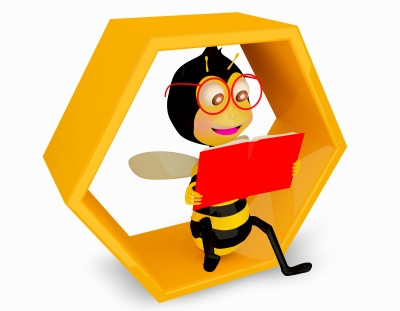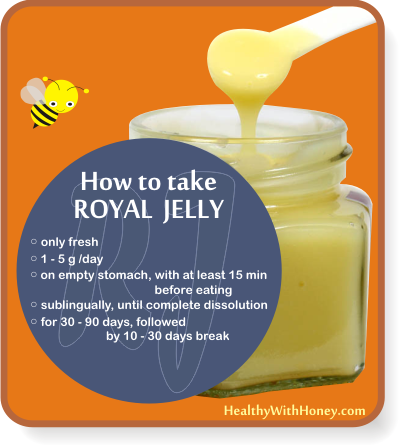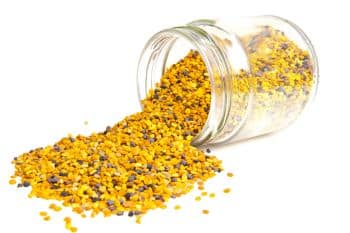Royal Jelly is very popular in Asia, especially China. Used since the beginning of times in the Chinese medicine, this country also has a lot of studies and literature on it. Unfortunately, all these studies are not accessible to non-Chinese.
In the western countries, we have only a few clinical studies, and most of them come from Russian scientists and are rather old. Eg: Shkenderov and Ivanov (in 1983), Ludyanski (1994), Krylov and Sokolski (2000), Asafova (2001) Krylov (2007) Many of the clinical applications described by them are monographs, the authors cannot cite the original citations as they don’t have access to them.
All these studies are old and don’t follow our present rules and criteria for a valid clinical study. For example double blind studies or trials made with necessary controls. Yet, they are made on a considerable number of patients and in some of the studies, control treatments have been carried out.
Effects of royal jelly on humans, as showed in old medical studies.

- Pediatry:
In premature babies or with nutritional deficiencies: improvement of general conditions, increase in weight, appetite, red blood cells and hemoglobin; - Geriatry:
Improves general condition and weakness of old people relief of menopausal problems; - Against stenocardia and after heart infarct; arteriosclerosis and atherosclerosis; hypertension hypotension;
- Against respiratory diseases, asthma;
- Against eye diseases, e.g. blepharitis, conjunctivitis and corneal burn, disturbed eye blood circulation;
- Bio-stimulatory, improves phisical performance of humans and resistance to hypoxia
- Improvement of memory, neuro-vegetative activation

- Against diabetes
- Against cancer
- Against gastric and duodenal ulcer
- Improves regeneration of skin in wounds
- Against degenerative rheumatism;
- Against warts,acne, ulcers, seborrhea, neurodermitis;
- Against renal dysfunctions
Biological and pharmacological effects of royal jelly studied and demonstrated in animal and cell culture experiments
- Antibacterial, fungicidal, antiviral, anti-parasitic effects;
- Bio stimulatory effects, anti-aging;
- Immuno-modulating effects:anti-cancer, anti-allergy and anti-inflamatory;
- Cardiovascular effects;
- Effects on the central and vegetative nervous system
- Anti-oxidation, hepatoprotective, radiation-protective;
- Skin protection, antidiabetic, gastroprotection, osteoprotection and others.
Considering all the data coming from old studies, our scientists have started to test the benefits of royal jelly more seriously. It is true, that the majority is again from China. It is somehow understandable, considering their rich background of using bee products in Chinese medicine.
Today the research have included the effect of royal jelly on new conditions, like the ones induced by chemotherapy and radiotherapy.
On July 2014, The International Journal of Otolaryngology published a randomized, single-blind (physician-blind), clinical trial made in Kyorin University Hospital, Japan, between 2009 and 2010. The study demonstrated that prophylactic use of RJ was effective in reducing mucositis, induced by chemoradiotherapy in head and neck cancer patients.
Read all about it: The Effect of Topical Application of Royal Jelly on Chemoradiotherapy-Induced Mucositis in Head and Neck Cancer A Preliminary Study.
What makes royal jelly so good for health?
Here are the bio-active ingredients and health promoting properties, last reviewed in 2012.
1. HDA and fatty acids
Royal Jelly contains mostly free organic acids with a rather unusual structure rarely encountered in nature, mono and dihydroxy acids and dicarboxylic acids with 8 and 10 carbon atoms, the man acid being 10-hydroxydecenoic acid (HDA). Lots of royal jelly’s effect have been reported, mostly for HDA: antibacterial, immuno activating, immuno modulating, anti-cancer, anti-diabetes, collagen promoting and skin protecting, anti-ulcer, facilitates differentiation of brain cells, estrogenic, antidepressant, anti-rheumatic. The activation of TRPA1 and TRPV1 induces thermogenesis and energy expenditure enhancement.
2. Proteins and peptides
Up to 90% of proteins found in royal jelly are of the RRJP type (major royal jelly protein). This protein type belongs to the albumin protein class and has immuno-modulating effects. Other proteins, like glycoproteins, and peptides have been identified: apisimin, one with antihypertensive activity and “jeleines” with antibacterial properties. Royalactin is the protein with the property of keeping stem cells in their initial pluripotent form. This confirms its regenerative properties.
3. AMP-N1 Oxide
AMP-N1 Oxide stands for Adenosine monophosphate N1 oxide and is a unique compound, found only in royal jelly. It is connected with the effects on centrally nervous system. It stimulates differentiations, promotes generation of all 3 types of cells: neurons, astrocytes and oligodendrocytes, against neuronal damage.
4. Adenosine
Adenosine is a biomolecule with many physiological effects. It produces inhibition in vascular smooth muscle cells of coronary arteries and neurons in the brain, by it hyperpolarising effect on the membrane potential of excitable cells. Royal jelly contains 5.9 to 2057.4 mg/kg adenosine.
5. Acetylcholin
Acetylcholin is a nerve transmitter, with a number of hormone-like effects in the central and vegetative nervous system. There is 1 mg of it at every gram of dry weight of royal jelly.
6. Hormones: testosterone, progesterone, prolactine, estradiol.
These hormones help increase the fertility of both male and female, and also increase male power and endurance. (see Royal Jelly in sport performance)
7. Polyphenols
The polyphenols present in royal jelly have been associated with its antioxidant effects.
As a conclusion, scientists have concluded that the unique anti-fatigue and brain activity properties of royal jelly are given by HDA, AMP-N1 oxide and hormones.
It is recommended to take royal jelly orally and not as injection. The best way is to take it sublingually, because this method achieves a direct transmission on royal jelly into blood, thus avoiding the decomposition of proteins in the digestion tract.

Read more on how to take royal jelly in specific conditions. And give it a try. Click the picture below to see more details at Amazon:
Related articles:
• Royal Jelly;
• What is the best bodybuilding supplement?
• Royal jelly and fertility
References:
• Bee Product Science, February 2014, bee-hexagon.net;
• Kohichi Yamauchi, Yasunao Kogashiwa, Yorihisa Moro, and Naoyuki Kohno, “The Effect of Topical Application of Royal Jelly on Chemoradiotherapy-Induced Mucositis in Head and Neck Cancer: A Preliminary Study,” International Journal of Otolaryngology, vol. 2014, Article ID 974967, 5 pages, 2014. doi:10.1155/2014/974967
=== ADS===
===
“Cell with royal jelly” Gord Campbell via flickr.com, under Creative Commons License
“bee reading a book” picture credit pixtawan, via freedigitalphotos.net
“mouse and cheese” picture credit Grant Cochrane, via freedigitalphotos.net;




